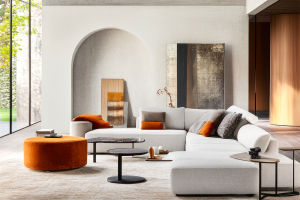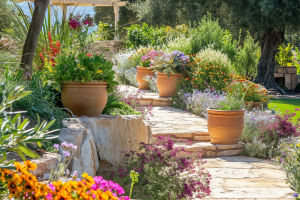Choosing the ideal dining table surface involves understanding the key differences between marble and ceramic materials. Both boast natural textures and a variety of color options, along with durability and weight.
For Lykkers aiming to make an informed decision, a clear comparison can highlight the strengths and considerations of each material. This guide explores their origins, physical characteristics, and practical features to assist in selecting the perfect dining table.
Understanding Marble
What Is Marble?
Marble is a natural stone formed over centuries by intense heat and pressure beneath the earth’s crust. It is mainly composed of calcite, limestone, serpentine, and dolomite, with calcium carbonate as its dominant component.
This gives marble its thick, rich texture and unique veining patterns, making every slab one-of-a-kind.
Visual and Aesthetic Appeal
Marble is prized for its elegant, timeless appearance. Its smooth, polished surface reflects light beautifully, adding a touch of sophistication and grandeur to any dining room. This material fits well in various design styles, from modern to rustic, providing a luxurious ambiance.
Strengths and Weaknesses
- Strengths: Marble remains a fashionable choice across many décor styles. It brings a sense of luxury and class to interiors.
- Considerations: Marble is softer compared to ceramic and can be scratched by sharp objects such as knives. It is porous, which means spills can seep in and stain the surface if not properly sealed. Regular sealing is required to maintain resistance to stains caused by common kitchen substances.
The Nature of Ceramic Dining Tables
What Is Ceramic?
Ceramic tables are crafted from natural inorganic minerals compressed under extremely high pressure and fired at high temperatures, often around 1280°C. This sintering process creates what is also known as sintered stone.
Unlike typical small-format ceramics, these slabs come in large sizes and varying thicknesses, from as thin as 3 mm up to 20 mm.
Durability and Surface Strength
Ceramic is remarkably resistant to scratches, rated at 6-7 on the Mohs hardness scale. Even sharp knives generally do not leave marks. This makes ceramic an excellent option for heavy use and active households.
Resistance to Environmental Factors
Ceramic surfaces offer outstanding resistance to UV rays, frost, and sudden temperature changes, ensuring they retain their color and structure for decades. This makes them suitable for indoor and outdoor use. Their high density also means extremely low water absorption (around 0.02-0.05%), leading to superior stain resistance and easy maintenance.
Chemical and Hygienic Properties
The material withstands exposure to household acids and bases without damage, making it ideal for hygienic environments such as laboratories or kitchens. Its non-porous nature prevents mold or bacteria growth and allows direct contact with food safely.
Heat Resistance
Ceramic can endure direct heat exposure without burning or discoloring. Hot pots can be placed directly on the surface without the need for coasters or trivets.
Comparing Marble and Ceramic: Key Differences
Material Composition
- Marble is mainly calcium carbonate, originating from natural geological processes.
- Ceramic is made from silica, inorganic clay, feldspar, and other minerals, processed through industrial methods involving high pressure and heat.
Porosity and Maintenance
- Marble is porous and requires sealing, usually twice a year, to prevent staining.
- Ceramic is non-porous, waterproof, and needs no sealing, making maintenance simpler.
Hardness and Scratch Resistance
- Marble ranks around 3-4 on the Mohs scale and is prone to scratching.
- Ceramic scores 6-7, providing much greater resistance to surface damage.
Heat and Chemical Resistance
- Marble is sensitive to heat and can be damaged by some household cleaners and acids.
- Ceramic withstands high temperatures up to 1280°C and resists chemicals commonly found in homes.
Weight and Thickness
- Marble slabs tend to be thicker (18-25 mm) and significantly heavier, requiring careful handling and installation.
- Ceramic slabs vary from thin (3 mm) to thicker options (12 mm), offering lighter alternatives for easier transport.
Aging and Color Stability
- Marble can fade or lose its shine over time if not properly maintained.
- Ceramic maintains color and finish without fading, suitable for long-term use.
Summary for Lykkers: Choosing the Best Dining Table Surface
When to Choose Marble
Opt for marble when seeking a classic, high-end look with natural stone elegance. It complements diverse design styles and elevates the atmosphere with its luxurious character. Keep in mind the need for ongoing care to protect against scratches and stains.
When to Choose Ceramic
Ceramic is ideal for those who prioritize durability, easy maintenance, and modern aesthetics. Its resistance to scratches, heat, and chemicals suits active dining spaces, especially where longevity and hygiene are important.
In Conclusion
Both marble and ceramic dining tables offer unique advantages that cater to different lifestyles and tastes. Marble stands out for timeless beauty and rich natural patterns, while ceramic excels in toughness and practicality. Lykkers can confidently choose based on personal needs, balancing style with functionality for a dining table that enhances daily life and décor for years to come.


